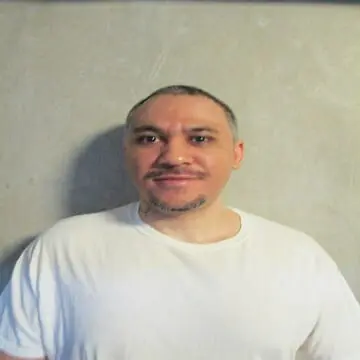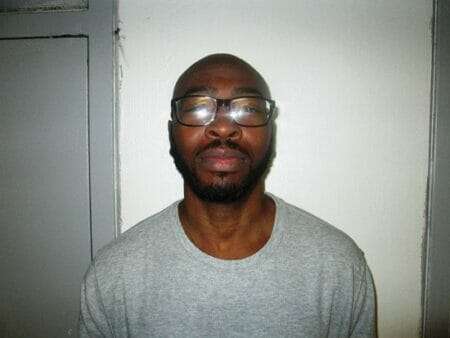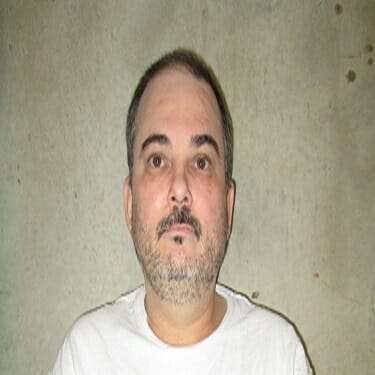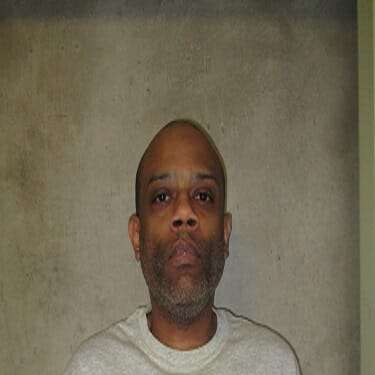
Donnie Harris was sentenced to death by the State of Oklahoma for the brutal murder of his girlfriend. According to court documents Donnie Harris would set his girlfriend, Kristi Ferguson, on fire causing her death. Donnie Harris was arrested, convicted and sentenced to death
Oklahoma Death Row Inmate List
Donnie Harris 2021 Information
Gender: Male
Race: Black
Height: 5 ft 8 in
Weight: 189 lbs
Hair Color: Black
Eye Color: Brown
OK DOC#: 688359
Birth Date: 9/29/1982
Current Facility: OKLAHOMA STATE PENITENTIARY, MCALE
Reception Date: 2/24/2014
Donnie Harris More News
Appellant was convicted of killing his girlfriend, Kristi Ferguson, by intentionally dousing her with gasoline and setting her on fire. The couple had been in a tumultuous relationship for several years. Late on the evening of February 18, 2012, Appellant and Ferguson showed up at the home of Martha Johnson in Talihina. Appellant lived with his father, brother, and others in a home near Johnson’s. Johnson and her son testified that Ferguson, nearly naked, was screaming for help on their front porch. Part of her bra was melted to her chest. The Johnsons smelled gasoline and burned flesh. As they waited for an ambulance to arrive, Appellant repeatedly tried to keep Ferguson from talking, saying things like, “Shut the fuck up. Shut your fucking mouth. Just shut your fucking mouth. You’re going to get me in fucking trouble. Don’t say another fucking word.” Ferguson was heard to say, “Donnie, look at me. Look what you did to me,” to which Appellant replied, “I know.”
¶3 Emergency personnel also testified that Appellant tried to keep Ferguson from telling them what happened. The paramedics repeatedly asked Appellant to get out of their way as they attended to Ferguson. As Ferguson was carried to the ambulance, Appellant ran alongside, repeatedly exclaiming that he was sorry, that he loved her, and “We took it too far.” Once Ferguson was secured inside the ambulance and away from Appellant, she said, “I don’t want him in here. Keep him away from me. Keep him away from me. Don’t let him near me. He did this to me. … He threw kerosene on me and set me on fire.”
¶4 After the ambulance left, Appellant walked to the home of his friend, Melvin Bannister. (At trial, Bannister testified that Appellant said he had gotten into a fight with Ferguson, and that some candles caught their house on fire.) When police made telephone contact with Appellant, he initially refused to reveal his location, but eventually agreed to be transported to the police station for an interview. Several witnesses said that Appellant reeked of gasoline; he had a serious burn to his left hand. A lighter was found in his pocket, although he later told a detective that he did not smoke.
¶5 Appellant gave authorities vague and inconsistent accounts of what happened.1 On February 19, 2012, after a brief discussion with Talihina Police Officer Justin Klitzke, Appellant had a more extensive interview with State Fire Marshal Agent Tony Rust, who had been dispatched to investigate the fire. Appellant told Klitzke that he kept a Crown Royal bottle of gasoline on a table in his bedroom, but said he had no idea how the fire started. Appellant wrote a four-page account of what happened for Agent Rust where he claimed that while he and Ferguson were in his bedroom, a fire of unknown origin broke out “in an instant,” and quickly “jumped to a blaze” on Ferguson’s clothes. When Rust told Appellant he did not believe that account, Appellant exclaimed, “I didn’t splash gasoline on her and set her on fire.”
¶6 On February 24, 2012, Appellant was interviewed by LeFlore County Investigator Travis Saulsberry. That interview was recorded and played for the jury at trial. He volunteered to Saulsberry (as he had to Officer Klitzke) that he kept a Crown Royal bottle full of gasoline on a table in his bedroom. Appellant maintained that he did not know how the fire started. However, from the beginning, he conceded that the gasoline-filled bottle played a part. Initially he theorized that Ferguson may have kicked the bottle off of the table. When directly confronted about how the fire started, Appellant offered various possible scenarios. Almost in the same breath, he claimed that it might have been caused by candles or a faulty space heater, but he later said there were no lit candles in his bedroom at the time. When confronted with Melvin Bannister’s claim that he had blamed the fire on candles, Appellant denied making such a claim. When confronted with a recording of Bannister’s statement to that effect, Appellant replied that he “didn’t know what else to say.” At one point he told Saulsberry, “I don’t know how it happened.” Still later, Appellant claimed that Ferguson actually grabbed the Crown Royal bottle full of gasoline and “threw it down,” causing the bed to catch fire. Appellant accused every other witness of being untruthful or mistaken.2
¶7 Because firefighters had to return to the scene several times to put out “hotspots,” Agent Rust was unable to safely inspect it until a few days after the fire. He collected pieces of a Crown Royal bottle found in the debris and sent this evidence, along with clothing Appellant was wearing at the time of his arrest, to the Oklahoma State Bureau of Investigation for analysis. According to OSBI Criminalist Brad Rogers, the pieces of the bottle contained traces of an ignitable fluid such as gasoline.
¶8 Ferguson was eventually flown to Oklahoma City for treatment of second- and third-degree burns over fifty percent of her body. She also suffered other fire-related trauma such as lung damage. She succumbed to her injures a few weeks later. The burn patterns on her skin were consistent with those made by a liquid accelerant such as gasoline. Doctors testified that the pain associated with Ferguson’s injuries would have been unimaginable.
¶9 The State presented evidence that the relationship between Appellant and Ferguson was tumultuous, that Appellant had made a number of menacing and threatening statements to and about Ferguson, and that Ferguson had sought a protective order against Appellant. A few weeks before the fire, Ferguson moved out of Appellant’s home to live with a friend, Jenny Turner. Turner testified that Appellant threatened to kill Ferguson several times, saying things like, “I will kill you before I see you happy in Talihina.” On one occasion, Appellant drove by Turner’s home, waved a handgun and said, “I wanted y’all to see my new friend.” Turner also recalled that a week before the fire, Appellant tried to run over Ferguson in his car.
¶10 The defense presented testimony from several of Appellant’s family, who described the relationship between Appellant and Ferguson and their observations during the fire. None of them had personal knowledge about how the fire started.
¶11 In the first stage of the trial, the jury found Appellant guilty of First Degree Felony Murder in the Commission of First Degree Arson, rejecting the lesser alternative crimes of Second Degree Murder (Depraved Mind), First Degree Manslaughter (Heat of Passion), and Second Degree Manslaughter (Culpable Negligence). The jury’s guilty verdict on a capital offense led to a second, capital sentencing phase of the trial. The State adopted the first-stage evidence to support its two aggravating circumstances. It presented victim impact testimony from Ferguson’s father, mother, stepmother, and sister. It also presented brief expert testimony about the pain Ferguson likely suffered as a direct result of her burns. The defense presented many friends and family who testified to Appellant’s upbringing, work habits, religious conviction, and general character as a good person whose life should be spared. The defense also presented a psychologist who examined Appellant and a mitigation specialist who provided a summary of Appellant’s life story. After being instructed on how to consider the evidence relevant to sentencing, the jury recommended punishment of death.
https://law.justia.com/cases/oklahoma/court-of-appeals-criminal/2019/d-2014-153.html








